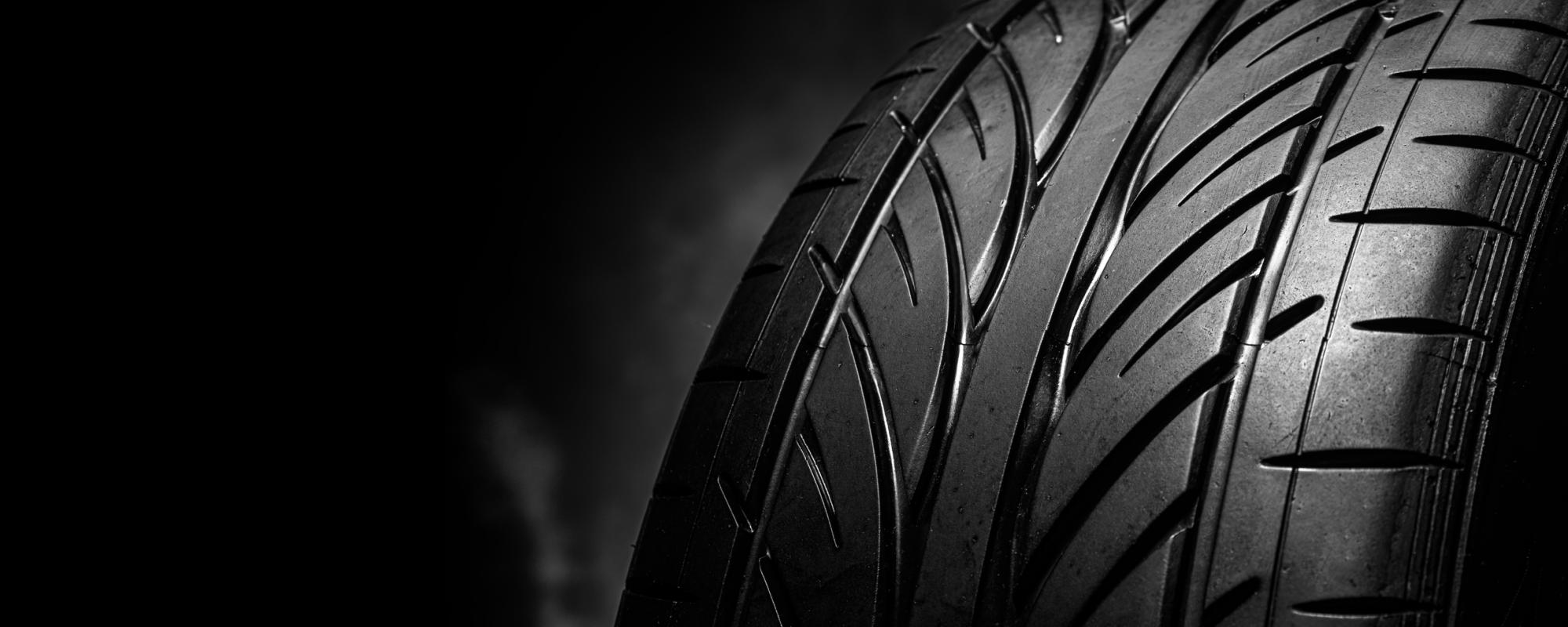What can we help you find?
By Topic
Quick Links
Innovation
Today’s tires grip the road better, are more fuel efficient and last longer. New designs and materials have enabled continual improvements and breakthroughs like run-flat tires, which function as far as 50 miles after a puncture.
The result: Tire-related fatalities are on the decline, decreasing by over 50 percent in recent government analyses. But we’re not satisfied. As long as our mobile society depends on tires, we will focus on improving safety through innovation.
How a tire is made
Modern tire technology blends a unique mix of chemistry, physics and engineering to give consumers a high degree of comfort, performance, efficiency, reliability and safety. Many tires are custom-designed to meet the stresses and performance needs specified by the maker of a particular model vehicle.
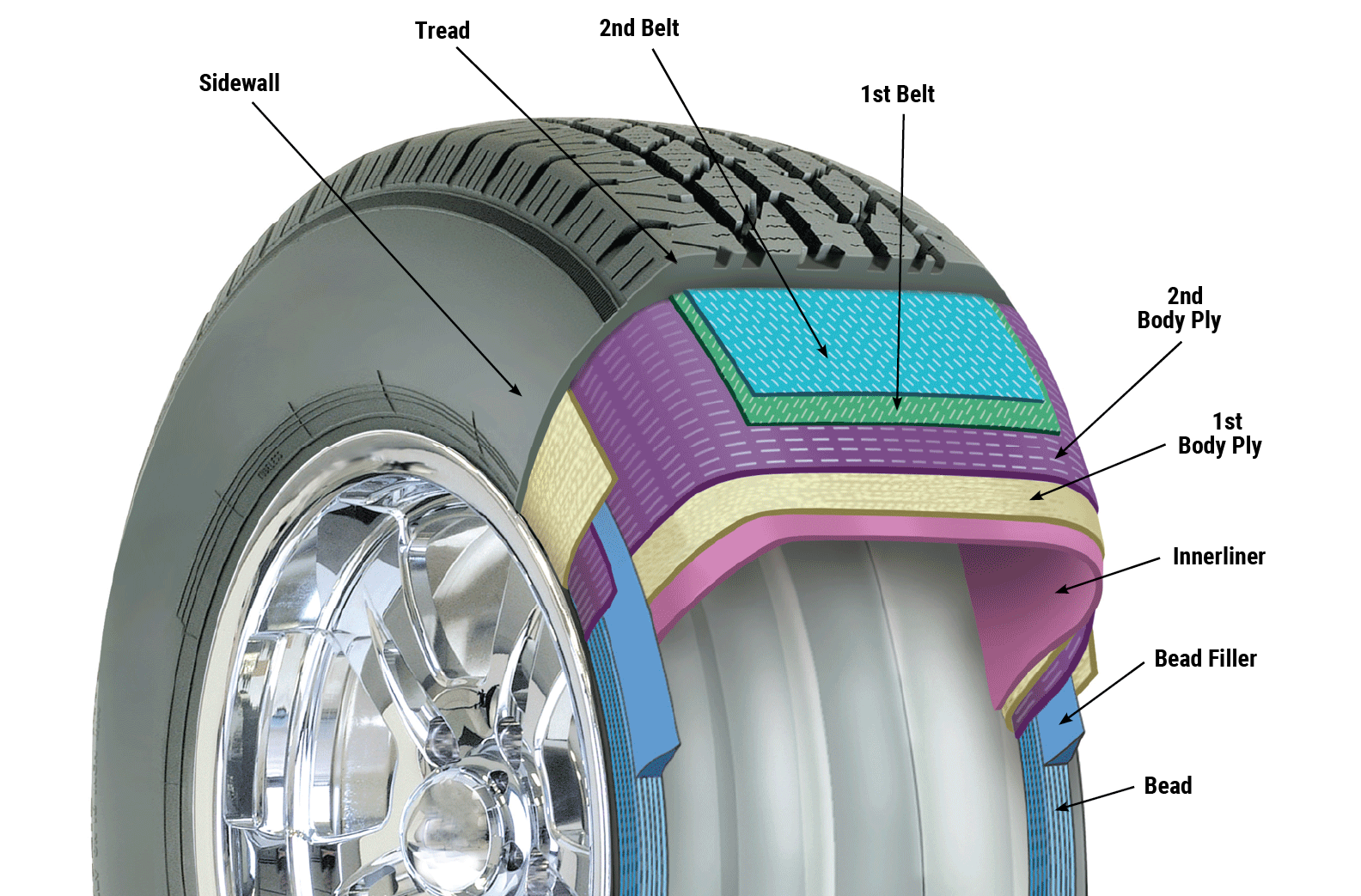
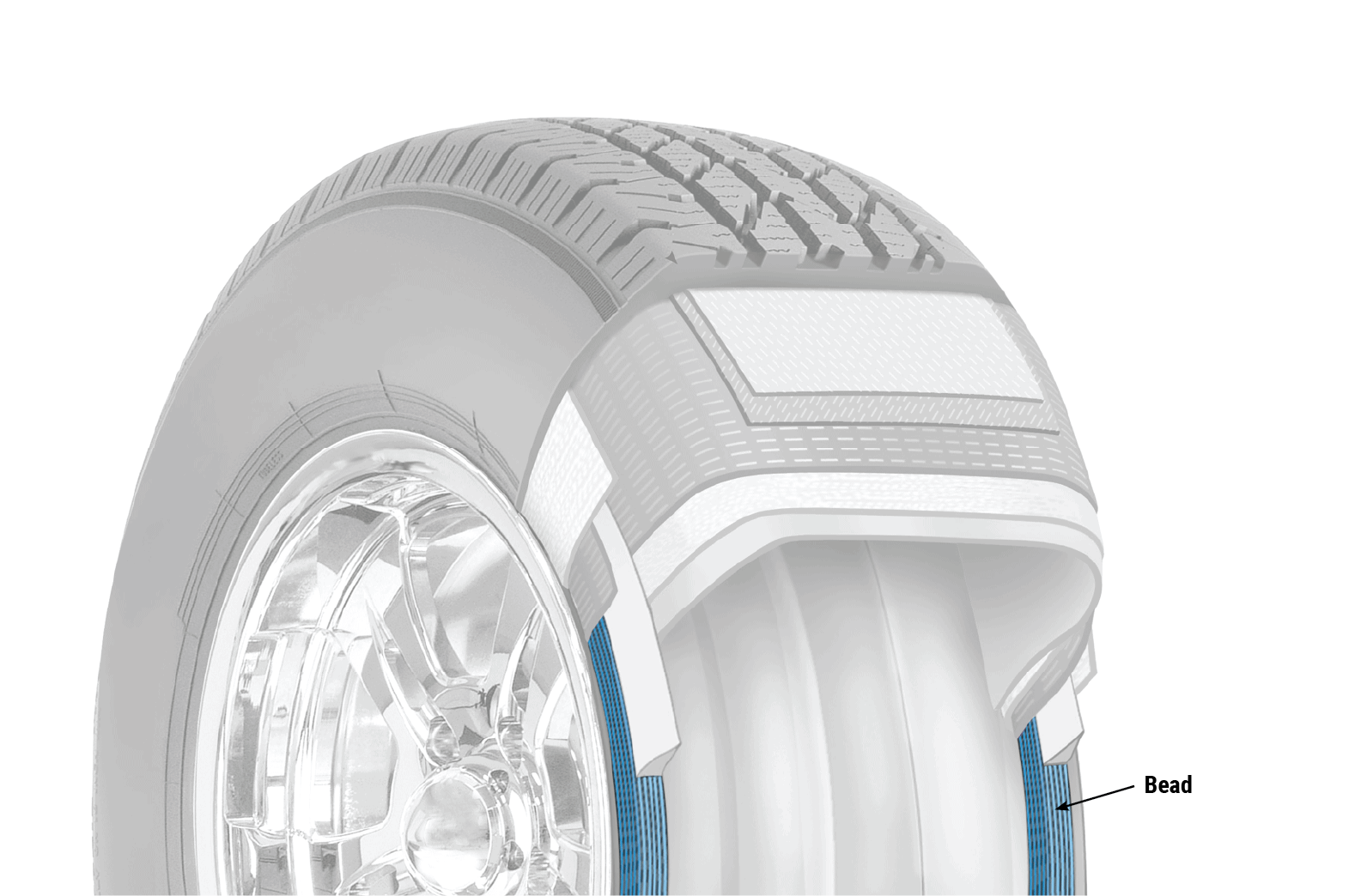
Bead
Tire bead bundles (usually strands of wire) secure the tire to the wheel.
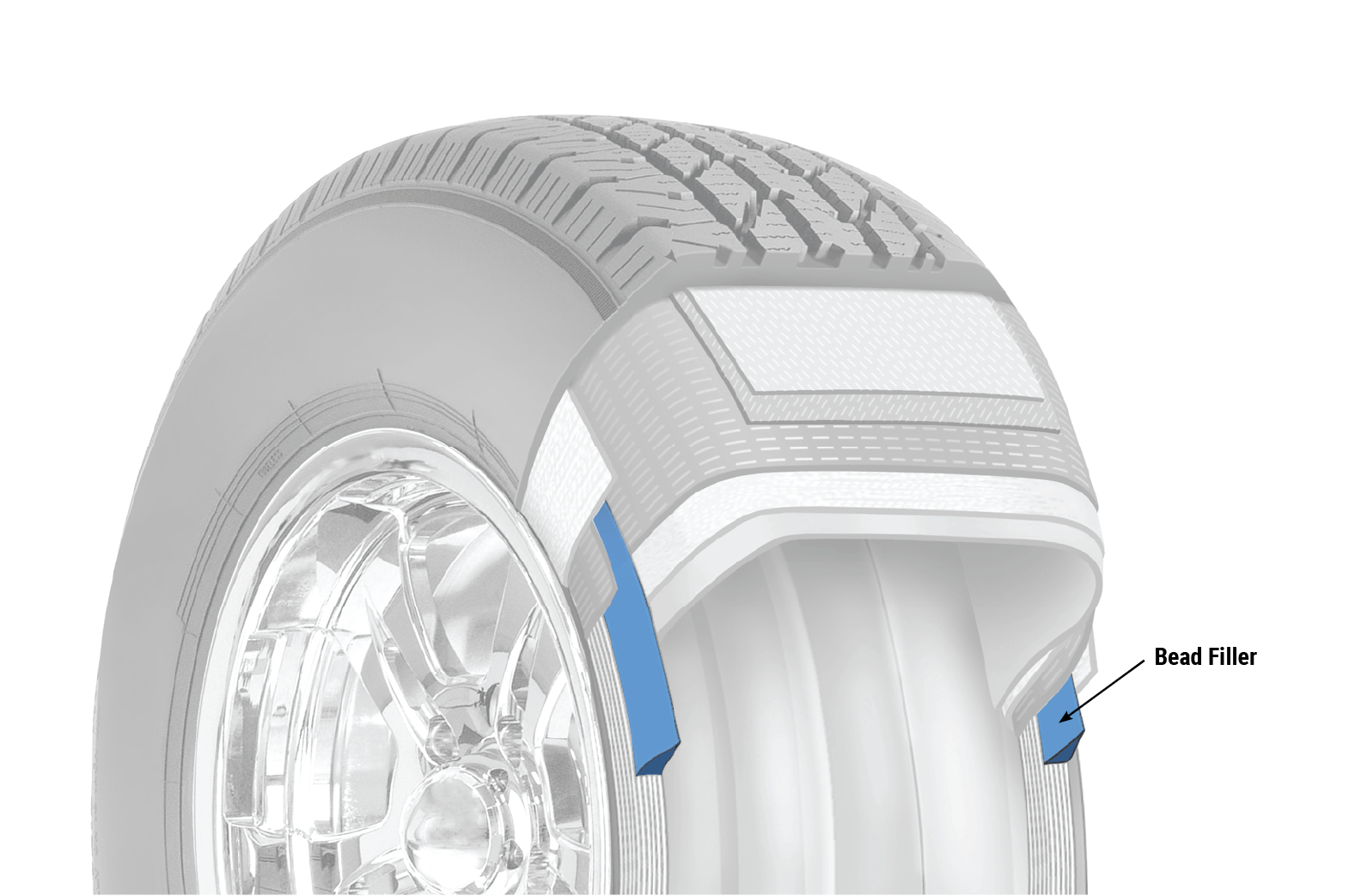
Bead Filler
A rubber compound placed above the bead bundle that may be used between the body plies which wrap around the bead to tune ride and handling characteristics.
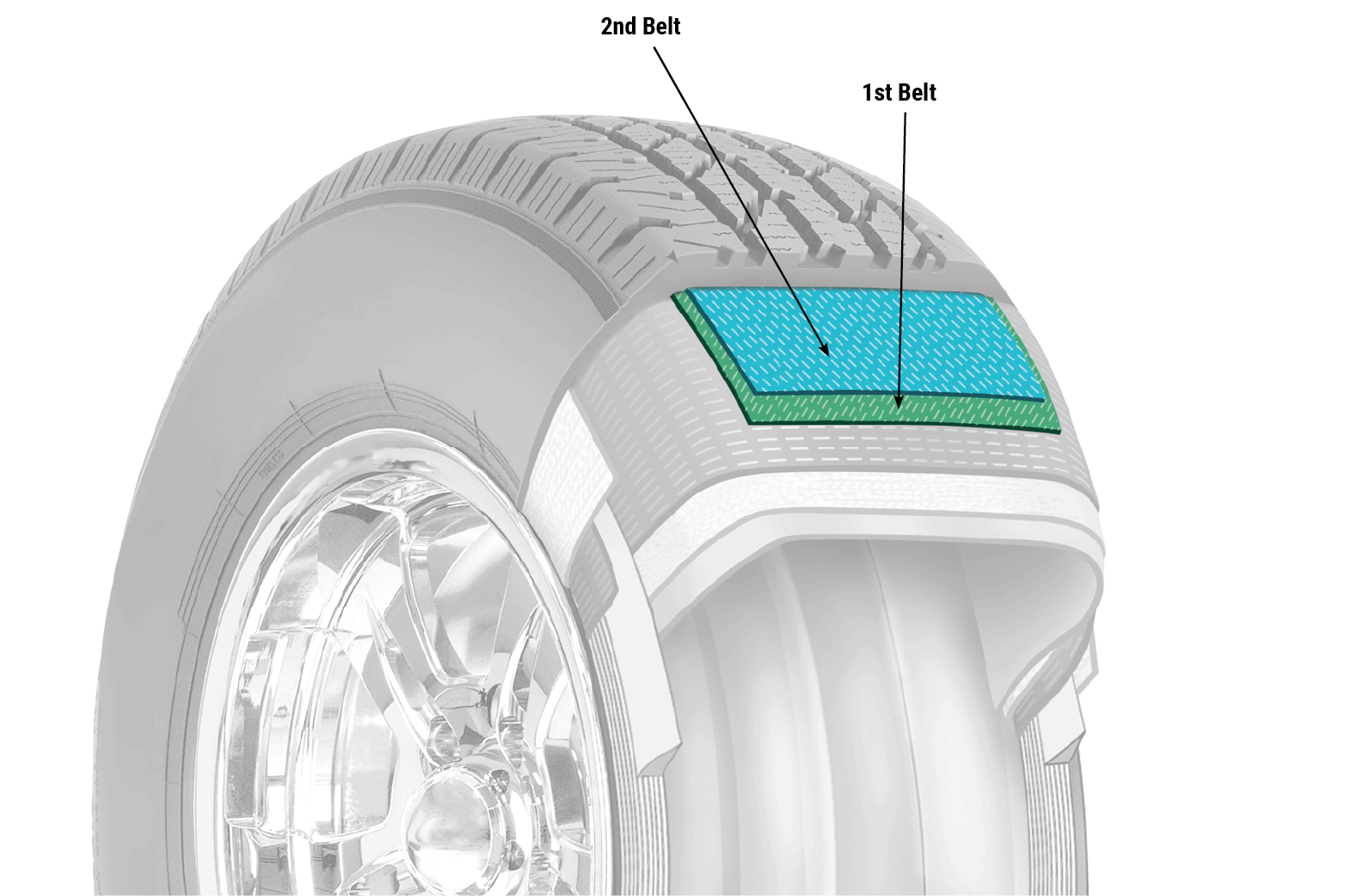
Belts
Typically, two belts with steel cords laid at opposing angles. Belts provide stability to the tread area of the tire, which contributes to wear, handling and traction.
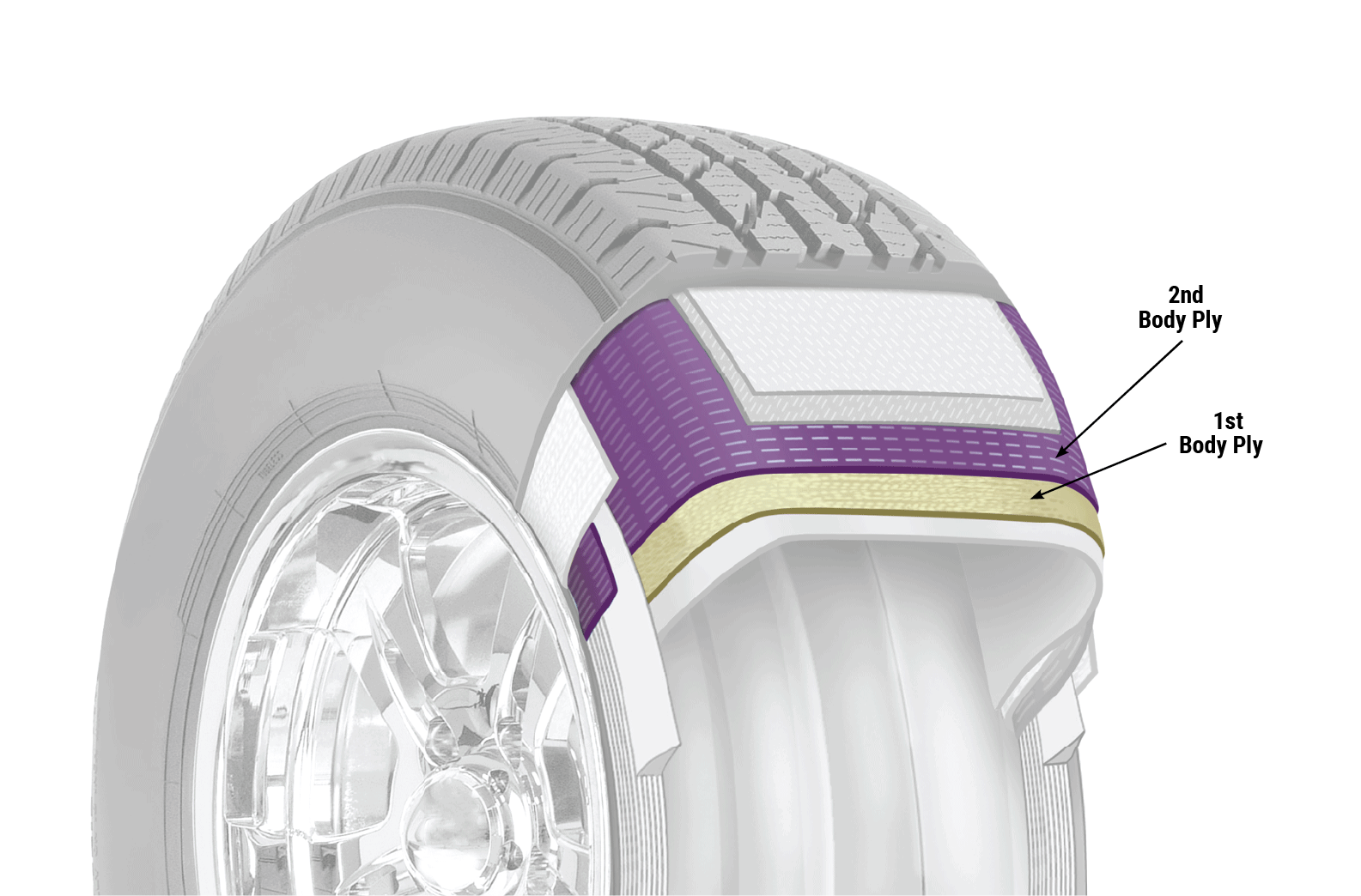
Body Ply
Most tires have one or two body plies, each typically comprised of polyester, rayon, or nylon cords within a rubber layer. Body plies function as the structure of the tire and provide the strength to contain the inflation pressure.
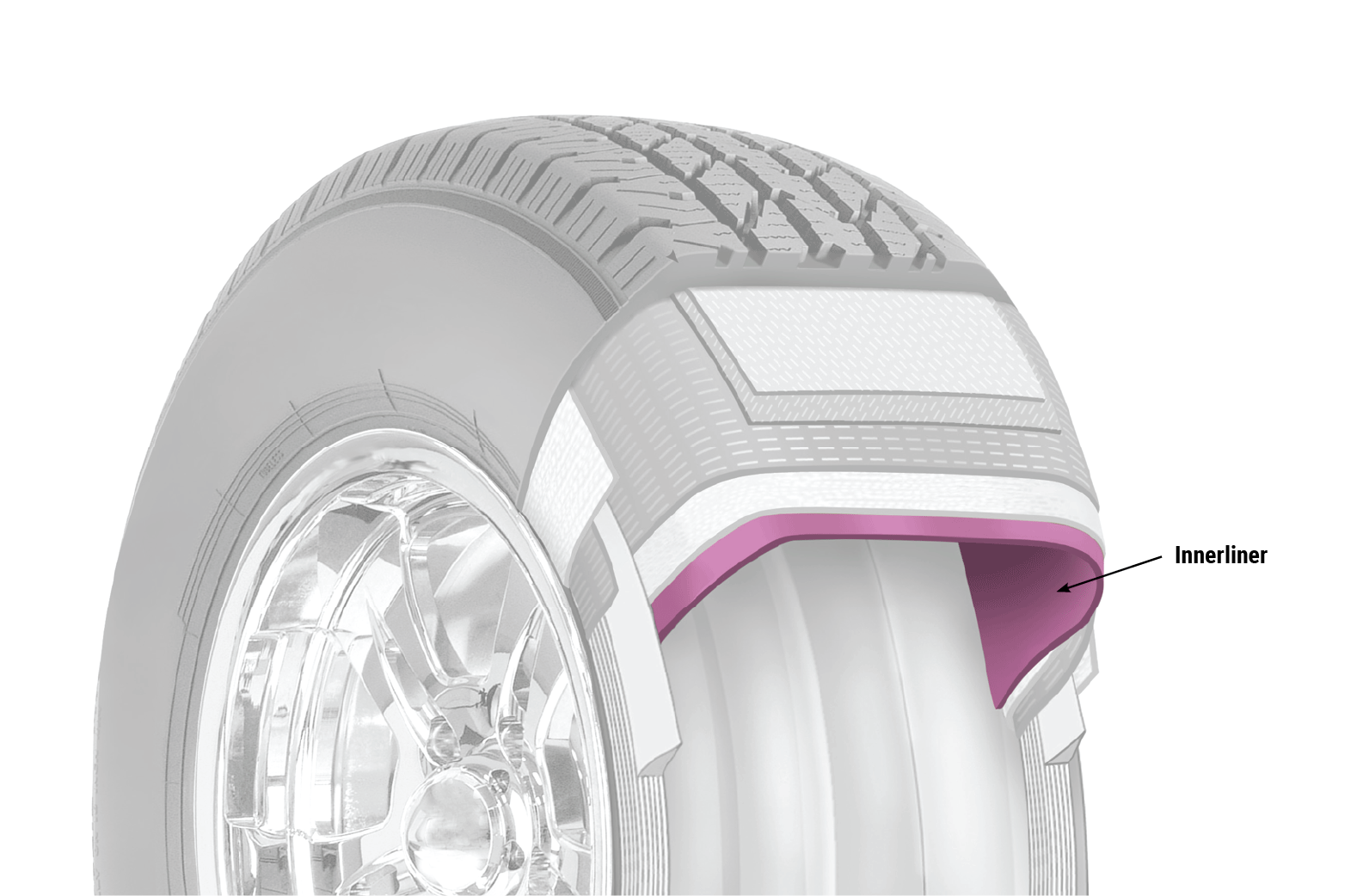
Innerliner
A rubber compound used to retain the inflation pressure inside the tire.
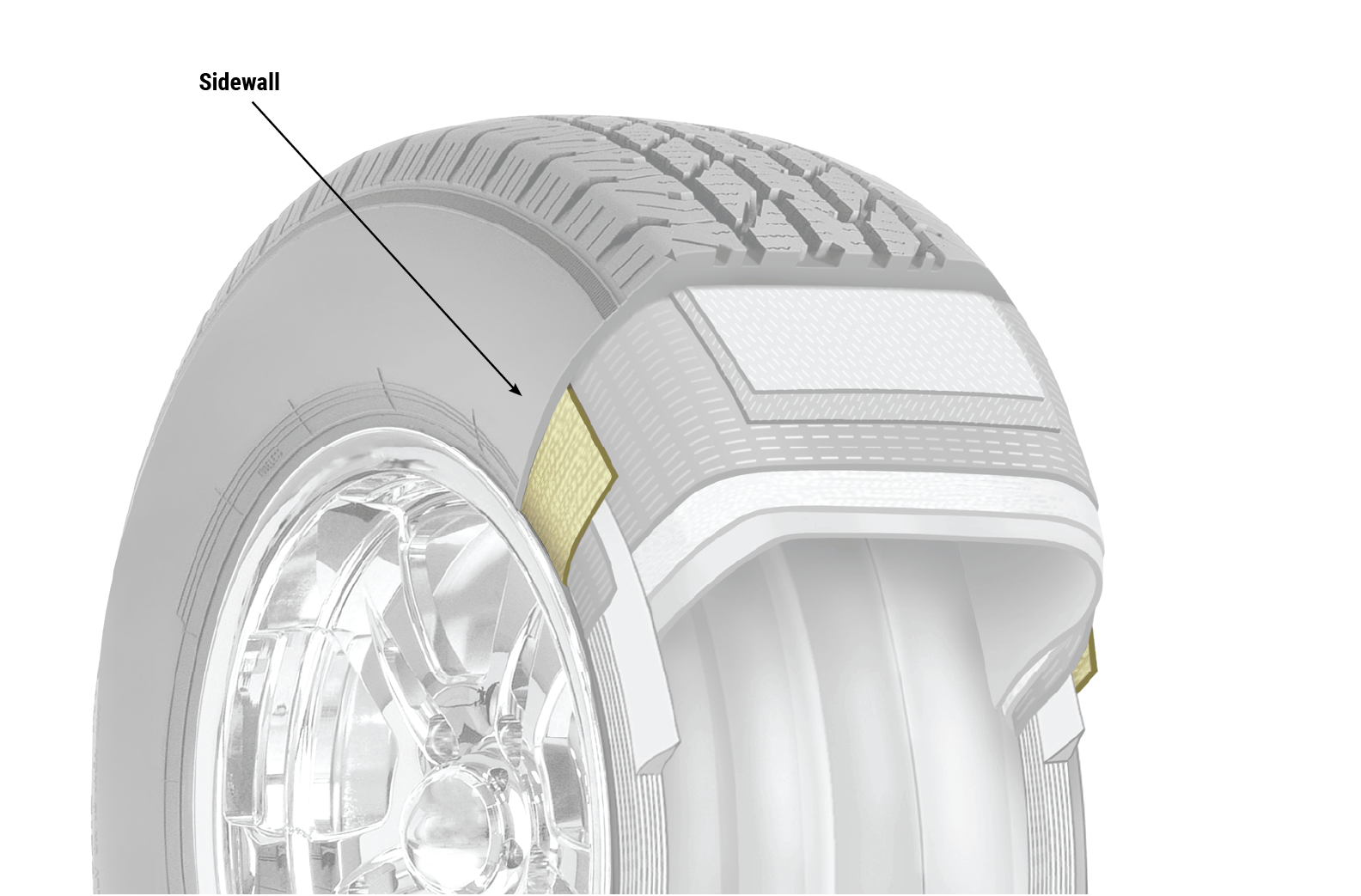
Sidewall
A rubber compound used to cover the body plies on the sides of the tire, which provides abrasion, scuff and weathering resistance.
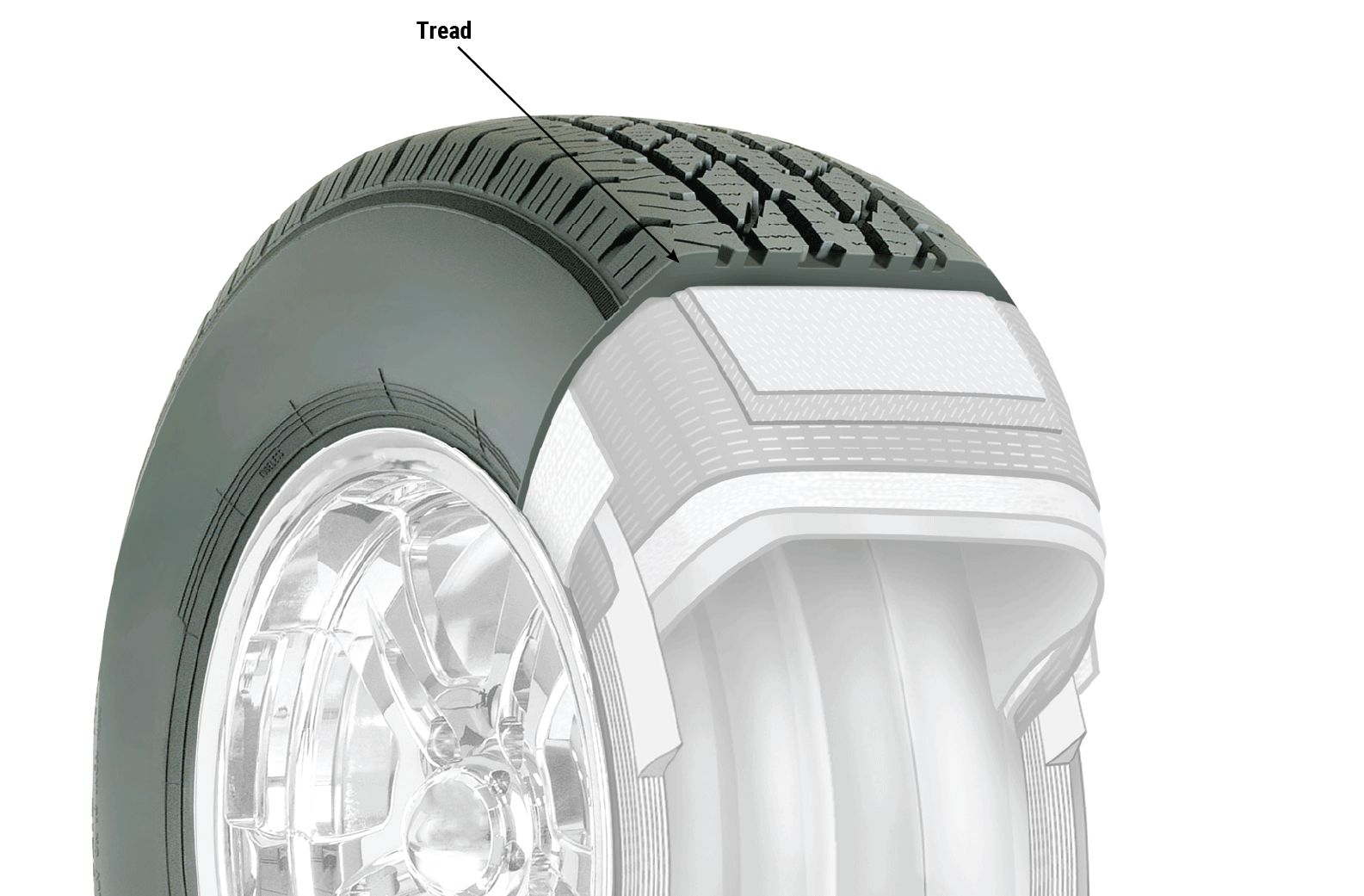
Tread
The tread rubber compound and tread pattern provide grip and abrasion resistance contributing to traction and treadwear.
Tire Composition
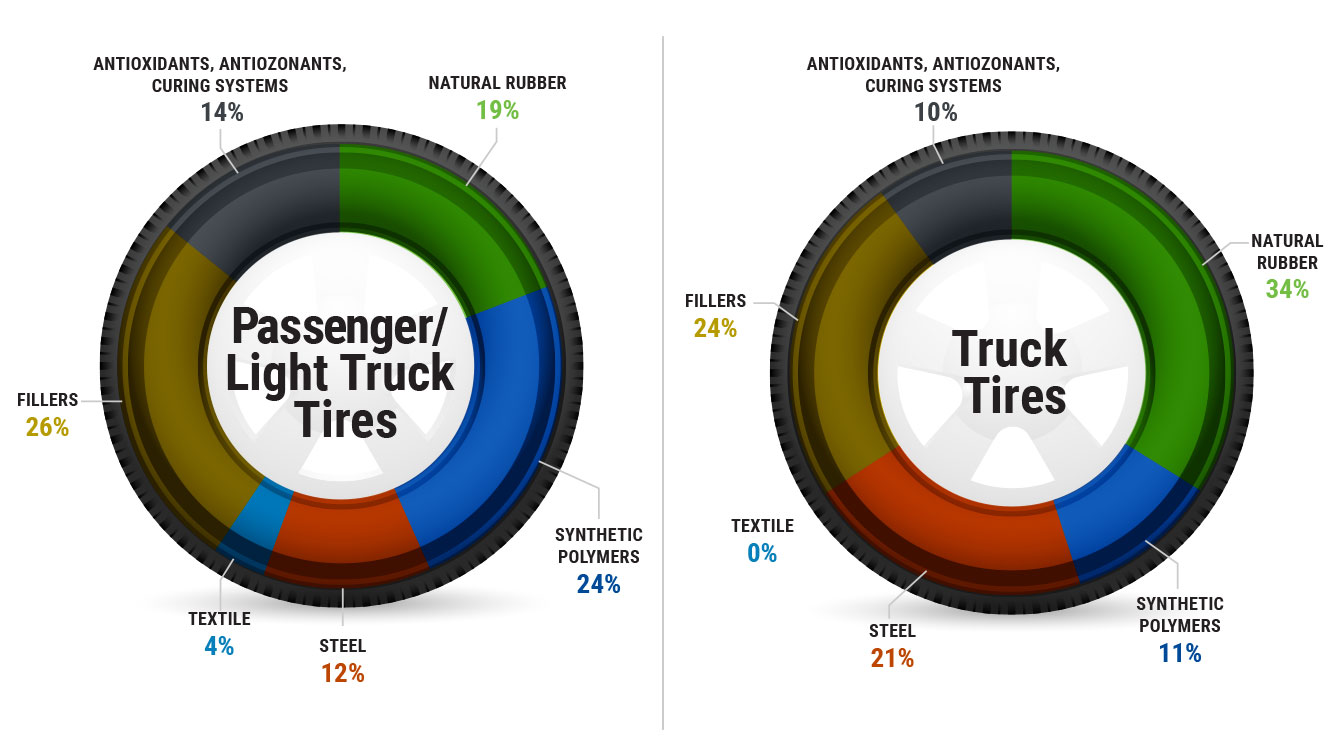
Natural Rubber
Natural rubber provides specific performance characteristics to tires. It is especially good for tear and fatigue crack resistance.
Synthetic Polymers
The two main synthetic rubber polymers used in tire manufacturing are butadiene rubber and styrene butadiene rubber. These rubber polymers are used in combination with natural rubber. Physical and chemical properties of these rubber polymers determine the performance of each component in the tire as well as the overall tire performance (rolling resistance, wear and traction).
Another important synthetic rubber is halogenated polyisobutylene rubber (XIIR) commonly known as halobutyl rubber. This material causes the innerliner to be impermeable, which helps to keep the tire inflated.
Steel
Steel wire is used in the tire belts and beads, and the plies for truck tires. The belts under the tread serve to stiffen the tire casing and improve wear performance and tire handling. The bead wire anchors the tire and locks it onto the wheel.
Textile
Textiles in tires are various types of fabric cords that reinforce the tire. Tire fabric cords provide dimensional stability and help support the vehicle weight.
These textiles are polyester cord fabrics, rayon cord fabric, nylon cord fabric, and aramid cord fabric. They are used to make the tire plies in passenger tires. While they serve as the primary reinforcing material in the tire casing and they also help the tire keep its shape in different road conditions which provide added endurance and performance characteristics to the tire.
Fillers (Carbon Black, Amorphous Precipitated Silica)
Both carbon black and silica are fillers that reinforce the rubber, that is, improve properties such as tear, tensile strength and abrasion. This results in improved wear performance and traction. Silica use improves rolling resistance.
Antioxidants
Antioxidants help to keep rubber from the breaking down due to the effect of temperature and oxygen exposure.
Antiozonants
Antiozonants are used to impede the effects of exposure to ozone on the surface of the tire.
Curing systems (Sulfur, Zinc Oxide)
Sulfur and zinc oxide, are crucial ingredients to transform rubber into a solid article during vulcanization or tire curing. Curing systems shorten the vulcanization time and impact the length and number of crosslinks in the rubber matrix that form during tire curing or vulcanization.
Innovation in tire safety
Charles Goodyear accidentally discovers that the addition of heat and sulfur alters the consistency of rubber, now known as the vulcanization process.
John Dunlop develops the first pneumatic, or airfilled, tire.
Paul Litchfield, Goodyear CEO, is granted a patent for the first tubeless automobile tire.
Grooved tires with improved road traction are invented.
Firestone develops balloon (low-pressure) tires.
B.F. Goodrich develops tubeless tire (tires that do not require a separate inner tube) technology.
The first radial tire (a tire with cord plies arranged at 90 degrees to the direction of travel, or radially from the center of the tire) is designed, patented and commercialized by Michelin.
The first bias-belted tire (a pneumatic tire with a belt of puncture-resistant material, such as steel or fiberglass) is introduced.
Federal Motor Vehicle Safety Standards (FMVSS) are adopted in the United States, establishing regulations to ensure consumer safety.
Transportation Recall Enhancement, Accountability and Documentation (TREAD) Act is passed by Congress requiring that all vehicles sold in the U.S. after September 1, 2007 include a tire pressure monitoring system to warn drivers about under inflated tires.

